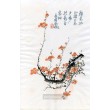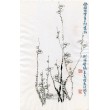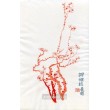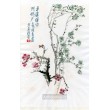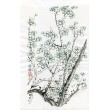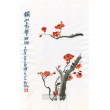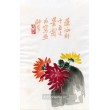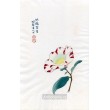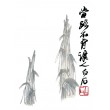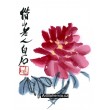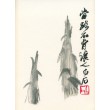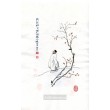Žádné díla
Kategorie
- grafiky/tisky
- obrazy
- kresby
- plakáty
- fotografie
- exlibris
- bibliofilie
- knihy/katalogy
- starožitnosti
- sochy/plastiky
- sklo
-
Hnutí
- abstrakce
- art-deco
- čs.avantgarda/moderna
- expresionismus
- fauvismus
- impresionismus
- kubismus
- naivní umění
- op-art
- poetismus
- pop-art
- realismus
- secese
- sociální kritika
- soudobá tvorba
- surrealismus
- světová avantgarda/moderna
- Škola prof. Albína Brunovského
- Škola prof. Zdeňka Sklenáře
- Škola prof.Julia Mařáka - mařákovci
- Žánr
- Zprávy/NEWS
- Doporučujeme
Nová díla
-

Světlo na profil v dlani (Prosby)
1 452 Kč -

Světlo na klečícího (Prosby)
1 452 Kč -

Ryba z akvária (Prosby)
968 Kč
-

The Happy Coupling (Le Goût du bonheur)
32 186 Kč -30% 45 980 Kč
Hnutí
- abstrakce
- art-deco
- čs.avantgarda/moderna
- expresionismus
- fauvismus
- impresionismus
- kubismus
- naivní umění
- op-art
- poetismus
- pop-art
- realismus
- secese
- sociální kritika
- soudobá tvorba
- surrealismus
- světová avantgarda/moderna
- Škola prof. Albína Brunovského
- Škola prof. Zdeňka Sklenáře
- Škola prof.Julia Mařáka - mařákovci
Žánr
NEJŽÁDANĚJŠÍ UMĚLCI
- Anderle Jiří
- Augustovič Peter
- Benca Igor
- Beneš Karel
- Bím Tomáš
- Born Adolf
- Brun Robert
- Brunovský Albín
- Boštík Václav
- Bouda Cyril
- Bouda Jiří
- Braque Georges
- Brázda Jiří
- Buffet Bernard
- Cézanne Paul
- Čapek Josef
- Čápová Hana
- Dalí Salvador
- Demel Karel
- Dudek Josef
- Dufy Raoul
- Effel Jean
- Felix Karol
- Filla Emil
- Giacometti Alberto
- Grosz George
- Chagall Marc
- Istler Josef
- Janeček Ota
- Jiřincová Ludmila
- Kandinsky Wassily
- Kĺúčik Peter
- Komárek Vladimír
- Kulhánek Oldřich
- Kupka František
- Lada Josef
- Lhoták Kamil
- Matisse Henri
- Miró Joan
- Mucha Alfons
- Muzika František
- Picasso Pablo
- Pileček Jindřich
- Reynek Bohuslav
- Sukdolák Pavel
- Suchánek Vladimír
- Svolinský Karel
- Šíma Josef
- Špála Václav
- Švabinský Max
- Švengsbír Jiří
- Tichý František
- Toulouse-Lautrec Henri de
- Toyen
- Trnka Jiří
- Váchal Josef
- Vik Karel
- Warhol Andy
- Zábranský Vlastimil
- Zoubek Olbram
- Zrzavý Jan
Seznam děl umělce Čchi Paj-š´ (Qi Bai-Shi)
(1863-1957) nejznámější čínský umělec, kterého obdivoval i Picasso! * * * * * The portfolio 'Selected Collection of RongBao Studio Letter Papers' was published by Rongbao Studio in 1951. It was the second edition of an earlier copy that was first
(1863-1957) nejznámější čínský umělec, kterého obdivoval i Picasso! * * * * * The portfolio 'Selected Collection of RongBao Studio Letter Papers' was published by Rongbao Studio in 1951. It was the second edition of an earlier copy that was first published in 1930s by the studio with different name 'Selected Collection of Peking Letter Paper'. Many artists in 1930s liked painting onto rice paper, and used the picture as personalised letter paper. Those original letter papers soon became collectible items and were highly sought after. The first edition consists of works from joint collection of Mr.ZhengZhenduo (the very author who wrote the introduction of the portfolio you offer) and Mr.Lu Xun (the spiritual leader/ guru of the whole generation of Chinese writers in the first half of 20th C.). The prints illustrated were made after original paintings. To retain the essence of those original paintings is the use of traditional Chinese woodblock printmaking technique that needs water-based ink. (so-called Chinese water print) Among these works, just as mentioned in your description, there are paintings by the great oriental impressionist Qi Baishi, however featured in this book, there are many other even bigger names, like Zhang Daqian (CCIV the crab) etc. This book is valuable. The unique, irresistable charm of Chinese water prints speak for themselves. In: odpověď jednoho z čínských klientů ArtBohemia na náš dotaz ***** Born in a small village named "Stars Pond", from Xingtan County in Hunan Province. He studied very little at school where he learnt some poetry. His family was poor and he was therefore forced to abandon his studies at an early eage. At fifteen years old, he began his apprenticeship in a carpenter's shop. When he was twenty, he became famous for his fine techniques on decorative wood carving and religious portrait paintings. At twenty-seven, he learnt classical literature and traditional Grass and Insects paintings from Hu Qinyuan e Chen Shaofan. At thirty-two, he organized jointly with seven friends a poets society called "Longshan" and was in turn elected the director. Since 1902, he travelled frequently and became acquainted with a lot of people. Since then, his love and vision for literature and art became blossomed. In order to escape from the social chaos, he chose to live in Beijing in 1917 and became acquinted with Chen Siceng. Two years later, Qi changed his painting style from a realistic to a more spiritual expression. In 1922, Chen Siceng took some of his works to participate in an exhibition in Japan. His paintings were greatly appreciated and were sold at a good price. In 1927 and 1928, he was invited by Lin Fengmian and Xu Beihong to teach in the Baijing Art School and the Faculty of Art, University of Beijing. In 1946, when the Chinese Artist Association was founded, he was elected honorary Director. In 1950, he was invited to be the Honorary Professor of the Central Academy of Arts and in 1955, he was awarded the International Peace Prize. The Exhibition of Paintings, Caligraphies and Seals of the grand Master Qi Baishi is finally presented in Macau by the Macau Chinese Culture and Arts Association. The purpose of this exhibition is to introduce to the Macau residents and people from different parts of the world the graceful Chinese culture and create an opportunity for appreciation and learning of the Chinese art. The exhibit includes sixty paintings and caligraphies and forty seals by Master Qi which are from the collection of the Hunan Provincial Museum. During the middle of December last year, leading members from the Association visited Hunan Province to select items for exhibition. The birthplace of the Master was completely covered with snow and there was nothing more than a few huts. How hard it must have been for the Master to learn and to become a great painter! With the cordial support from the Hunan Provincial Museum and the Museum of Macau, one hundred pieces of Qi's works are being exhibited over a period of one month. The University of Macau has gratefully given the sponsorship for the edition of an exhibition catalogue. In: http://www.macaumuseum.gov.mo/htmls/tempexhi/intro_eng.htm * * * * * Qi Baishi (Ch'i Pai Shih) is one of the greatest Chinese painters. Chinese tradition places essences, character, and spirit above the simple faithfulness to appearances. Qi Baishi's paintings well represent the Chinese tradition, but in an innovative form and style. Though the art of Qi Baishi was originated from nature, which one can learn from his paintings of animals, insects, and flowers, he painted them in a way nobody else had achieved before. He once said, "The excellence of a painting lies in its being alike, yet unlike. Too much likeness flatters the vulgar taste; too much unlikeness deceives the world." Qi Baishi had developed his style over his life-long learning, studying, and innovation. His paintings were not matured until his late life. He was born in Xiangtan, Hunan Province, on Jan. 1, 1864. His birthday was in 1863 based on the Chinese lunar calendar. His family was poor like most Chinese families and they lived on the cultivation of rice on a small piece of land. At seven, he learned about 300 Chinese characters his grandfather was able to teach. He only had one year formal education when he was eight years old. The tuition for the one year was paid using his mother's saving. Qi Baishi's major activities are summarized below: • 1877: When he was sixteen, he started to learn carpentering with Zhou Zhimei, a woodcarver. • 1881: At 19, Qi Baishi married with Chen Chunjun (1863-1940). • 1888: Qi Baishi started to learn painting with Xiao Xianghai, who was the finest portraitist in Xiangtan. Studied calligraphy and literature under Hu Qinyuan and Chen Shaofan, respectively. • 1899: Qi Baishi became a student of Wang Xiangyi, who was one of the most influential scholars of the time. • 1892-1901: Joined the Dragon Hill Poetry Society and the Longshan Poetry Society. • 1902-1909: Five trips. He was invited by Xia Wuyi to Xi'an. He toured Beilin there, where there were over 1,400 stone tablets engraved with writings by China's finest masters of calligraphy. Later, he went to Beijing, the capital, with Xia Wuyi. He was then introduced to some big names of arts, such as the jinshi-degree scholars Zeng Xi and Li Ruiquan. Li Ruiquan tutored him in the script styles of Northern Wei dynasty steles. In 1905, Qi Baishi borrowed an album of seal impressions by Zhao Zhiqian, who had been a major pioneer of modern jinshi art. He also made a trip to Guilin in 1905. He traveled to Qinzhou with Guo Baosheng and others in 1907. They went on the trip to as far as Vietnam. Later, he traveled to Guangzhou, Hongkong, Shanghai, Suzhou, and Nanjing. • 1917: Settled in Beijing. Qi Baishi met with Chen Shizeng. His relationship with Chen Shizeng is considered as one of major turning points of his career. • 1919: Qi Baishi had a new concubine, Hu Baosheng from Sichuan. She was 18 years old. • 1920: Lin Su compared Qi Baishi with Wu Changshi in his remark, "Wu in the south and Qi in the north may be considered a pair." Lin Su was an influential artist. Wu Changshi was the greatest living exponent of the Shanghai school of painting. The dramatist Qi Rushan introduced Qi Baishi to Mei Langang (1894-1861), who was a famed opera star. • 1922: Chen Shizeng took Qi Baishi's paintings to an exhibition, featuring paintings by both Chinese and Japanese artists in Tokyo. All of his paintings were sold and two of his works were selected for public display in Paris. • 1927: He started to teach traditional painting at the Beijing Art Academy, invited by the director Lin Fengmian. When the school changed its name to the Beijing Art College in 1928, Qi Baishi became a professor. He published his 'Jieshanyinguan Shicao', a collection of his poetry. • 1933: Baishi Shicao, a collection of his poetry in eight volumes, was published. And he also printed a ten-volume seal album with cinnabar seal ink. • 1937: The Sino-Japanese war broken. Japanese controlled Beijing and Tianjin. In protest, he locked his door and refused to see most guests. He posted a sign on his door, "Old Man Baishi has had a recurrence of heart sickness and has stoped receiving guests." Qi Baishi quit teaching at the Beijing Art College. • 1940: His wife, Chen Chunjun, passed away. • 1941: Qi Baishi officially married Hu Baozhu. • 1944: Hu Baozhu passed away. • 1945: Japan surrendered. Qi Baishi resumed the sale of his paintings and seals. • 1946: He asked Hu Shi to write his biography. He hold one-man exhibitions of his paintings in both Shanghai and Nanjing, invited by the Shanghai Art Society and the All China Art Society, respectively. He met Chiang Kai-shek and was honored in a grand and solemn ceremony. Qi Baishi accepted Zhang Daofan as his student, who was Director of the All China Art Society. • 1949: Qi Baishi was elected a member of the National Committee of the Chinese Federation of Writers and Artists and of the National Committee of the Chinese Artists' Association. Xu Beihong, Director of the Central Academy of Art, appointed Qi Baishi to the honorary professor. • 1953: He was conferred the title "People's Artist" by the Central Cultural Ministry. He became Chairman of both the Chinese Panting Research Society of Beijing and the Chinese Artists' Association. • 1954: Elected the Hunan province representative of the National People's Congress. • 1955: East Germany's Academy of Art appointed him an honorary fellow. • 1956: The World Peace Council granted their International Peace Award to Qi Baishi. • 1957: Qi Baishi was named Honorary President of the Beijing Studio of Traditional Chinese Painting. And a film entitled "The Artist Qi Baishi" was made. Qi Baishi passed away on September 16, 1957. In: http://chineseculture.about.com/library/weekly/aa013199.htm * * * * * Qi Baishi (1863-1957) Qi Baishi was a versatile artist. Although he could paint excellent human figures, animals, and landscapes, he was mainly known for his flowers, birds, insects and fish, which were his major themes in later life. He particularly enjoyed painting rural scenes. Qi Baishi brushwork is exceptionally fluent and his position of red and black creates a strong feeling of autumnal richness and response. Qi Baishi's works have a fresh lyrical quality and sought to achieve a “likeness both in shape and spirit" of the things he portrayed. He was able to suggest the essence of a subject with a few brief strokes. One can perceive in his art a high sense of reality. Everything he painted is bubbling with life, joy, optimism and often humor, this reflected his own view of the world. ***** Qi Bai-shi ( 齊白石), also known as Qi Huang (齊璜) or Qi Weiqing (齊胃青), was born in 1863 in Xiangtan (湘 潭) County, Hunan (湖 南) Province. He was a woodcarver in his early youth, and taught himself painting, poetry, calligraphy and zhuan (篆)seal carving in his spare time. In the seven years beginning from 1902, he left home five times to wander around many famous mountains, lakes and rivers throughout the country and painted numerous landscapes. In 1910, when he finally came home, he created "Jieshan View" and 51 other landscape paintings. Since 1918 he resided in Beijing ( 北 京) and lived by his painting and calligraphy. Most of the subjects he painted were flowers, birds, insects and fish. In 1928 he began to sign his name on the paintings as 白石 ( Bai-shi means literally "White Stone," which implies "Snow Mountains"). He said, at one time, "I learned finger-painting in my youth; landscape painting after 30; and specialized in flowers, insects and birds after 40." After that, he resolved to paint "all the insects and birds in the whole world." During his lifetime he had painted countless number of flowers and birds. He changed his painting styles several times before settling down finally to create his own unique style. In 1952 he was appointed Honorary Professor of the Central Academy of Fine Arts, Beijing. In 1953 the Ministry of Culture of the People's Republic of China conferred on him the honorable title of "People's Artist." He was elected President of the Chinese Artists' Association at the Second National Congress of Writers and Artists. In 1954 he was a deputy of the First National People's Congress. In 1955 he was awarded the World Peace Prize by the World Peace Council. Qi Bai-shi died in Beijing on September 16, 1957 at the venerable age of ninety-six. ***** Qi Bai-shi is also known as Ch'i Pai-shih in the western literature. Quotes from an essay by Alice Boney: He was born into a poor peasant family in the year 1861 in Hsiangtan, (Xiangtan 湘 潭) Hunan, China. His was a family of poor farmers who worked hard on their land. Ch'i (Qi 齊), however, was a delicate child, and as he was unable to endure the strength-taxing labor in the fields, when he was eight years old his family apprenticed him to a carpenter. After a ten-year term he decided to try fine carving and cabinet making. He became a master carver and until his death was a renowned seal cutter. In his search for designs he became interested in painting and so discovered "The Mustard Seed Garden" (芥子園畫譜). This is a comprehensive series of flower, tree, rock and other motifs compiled and printed for student artists. He fell completely in love with this and copied and recopied the entire series. This was his introduction to Chinese painting, and thus he spent long years practicing the meticulous and painstaking kung pi (工筆) style and assimilating the traditional. He managed to visit all the celebrated scenic spots of China and so widened his scope and vision. When he became the pupil of the literary scholar, Wang Kai-yin, he came under the spell of the famous monk painters Pa Ta Shan-jen (八大山人) and Shih-tao (石濤) of the late Ming (明) and early Ch'ing (清) periods. Thus at the age of forty he chose as his own the style called hsieh yi (寫意), or the swift, sure, spontaneous, emotional brush stroke usually perfected only by the exalted calligrapher scholar. To Pa Ta Shan-jen's strong, forceful brush he has added ever more force - plus a striking individuality that stamps him as one of the great painters of China and indeed of the world. Ch'i painted continually but did not gain recognition until he was sixty. His best work was done between his seventieth and eightieth years. Qi Baishi died in Beijing on September 16, 1957. ***** Qi Baishi (1864-1957) Nato nel 1864, Qi Baishi e` deceduto nel 1957 vivendo quasi un secolo. La sua splendida arte pittorica ci ha lasciato una mole di gioielli, conquistandosi con i suoi capolavori una brillante pagina nella storia dell’arte cinese. Qi Baishi visse la maggior parte della vita nella vecchia Cina sofferente. Figlio di una famiglia di contadini, studio` per solo mezzo anno in una scuola elementare rurale e fu artigiano scultore del legno per 15 anni, per diventare poi pittore. Qual’e` il suo mistero? La risposta e` nella diligenza e il forte interesse per la pitura, e da ragazzo nel suo paese era noto perche' disegnava immagini dei santi e ritratti. A 27 anni, con l’aiuto di alcuni intellettuali, comincio` a studiare la pittura tradizionale cinese; dopo il 1940, fece molti viaggi visitando i monti e i fiumi piu` famosi del paese, e dipinse numerosi schizzi di paesaggio. Sotto l’influenza della vita e della pratica, il suo stile pittorico andava gradualmente trasformandosi; da preciso e meticoloso a audace e disinvolto, formando cosi` il suo peculiare stile artistico. A 57 anni, Qi Baishi si trasferi` dal suo paese nativo della provincia dello Hunan a Pechino, dove si guadagnava da vivere con la vendita di dipinti e l’incisione di sigilli. Secondo i dati, in tutta la sua vita, Qi Baishi si astenne dal dipingere solo in tre occasioni: la prima volta all’eta` di 63, quando cadde gravemente ammalato, perdendo conoscenza per sette giorni; la seconda volta a 64 anni, quando sua madre si spense ed era troppo addolorato e triste; la terza volta, a 92 anni, sempre a causa di una malattia non prese in mano il pennello per parecchi giorni. Sommati insieme, questi tre periodi arrivano appena a superare un mese, altrimenti non si stacco` mai dai pennelli. La lunga pratica artistica lo porto` a eccellere non solo nella pittura, ma anche nella poesia, la calligrafia e l’incisione di sigilli. Secondo una statistica incompleta, nella sua vita Qi Baishi ha lasciato oltre 40.000 dipinti, mille poesie e piu` di 3.000 sigilli. Anche alla vigilia dei vent’anni, nel 1953, egli dipinse in un anno piu` di 600 opere. La pittura di Qi Baishi mostra una tecnica totale e una vasta gamma di soggetti. Era esperto in quasi tutti i campi, nello stile libero di tipo impressionistico, nello stile preciso e meticoloso, nei paesaggi e fiori e uccelli. Qi Baishi aveva una particolare sensibilita` per alcune delle cose piu` comuni della vita quotidiana. Egli riusciva a trarre da questi oggetti ordinari sensazioni ricche e sincere e con il suo pennello geniale afferrare l’essenza e l’anima di tutte le cose della natura, rendendole piu` vivaci, piu` eleganti e piu` ricchie di forza e del gusto della vita. E proprio attraverso le sue pennellate essenziali e vigorose che trasmette agli altri le proprie sensazioni, facendo condividere a chi quarda i suoi dipinti quei sentimenti di sana vitalita`, gioia e bellezza. I fiori che dipingeva, come anche le ciliege e le nespole, sono quanto mai vivi e attraenti. Mentre le immagini di ogni specie di insetti, come libellule, farfalle, cavallette, mantidi, api, locuste e cicale, lasciano stupiti per la loro esattezza e finezza. Attraverso le trasparenti ali degli insetti, possiamo vedere i loro corpi che vorrebbero muoversi ma non possono; due macchie d’inchiostro sui fianchi delle api danno la sensazione di percepire il vibrare delle ali e il loro ronzio. La raffinatezza non risiede solo nell’abilita` con cui la peluria dell’ape viene dipinta, ma pure nella commovente maniera espressiva e nella forza vitale che sprigiona dai corpi degli insetti. Lo stesso vale anche per le immagini degli animali: pesci e gamberi, granchi, passeri, martin pescatori, gazze, gatti, topi e pulcini. L’inchiostro sfumato e nero lascia immaginare la trasparenza dei gamberi nell’acqua e le delicate piume dei pulcini, ma ancora piu` simpatici e verossimili risultano i giochi di pesci e dei gamberi, e la vispezza infantile dei pulcini. Gamberi, granchi e pulcini da lui dipinti vengono detti “Tre meraviglie di Baishi”. Qi Baishi valorizzo` le possibilita` dell’inchiostro di china nel descrivere le immagini in modo realistico, arricchendo l’inchiostro nero dell’impressione delle tonalita` e delle variazioni cromatiche. Egli integro` con successo la tecnica tradizionale della pittura cinese a inchiostro con la propria abilita` giovanile di scultore e incisore minuzioso, formando un proprio particolare stile pittorico. Un uso cosi` abile, essenziale e preciso del pennello e dell’inchiostro, non sarebbe stato raggiungibile senza un assiduo affinamento e una lunga esperienza. Sul piano teorico Qi Baishi ebbe sue peculiari opinioni artistiche. Egli propugnava lo studio degli antichi per assimilarne le esperienze, senza pero` copiare meccanicamente. Bisogna assimilare il loro spirito per intraprendere una creazione autonoma. Egli sosteneva che i pittori debbano immergersi nella vita, “facendo il ritratto a dieci mila insetti e insufflando la vita in cento uccellie” e per cercare nella vita la materia prima per la creazione artistica. Egli riteneva che il “segreto della pittura e` che la bellezza risiede in un punto intermedio fra somiglianza e non somiglianza”: un dipinto non puo` essere fatto copiando pedissequamente un soggetto; cosi` sara` troppo volgare; non si puo` neanche abbandonare la forma del soggetto, cadendo invece nella distorsione: di devono piuttosto rendere con precisione i tratti caratteristici delle cose. Queste sono opinioni estremanente penetranti e incisive. Qi Baishi non fu soltanto un pittore molto attivo e serio, ma anche una persona onesta, sincera e generosa. Anche quando, ormai famoso, era in condizioni di discreto benessere, conduceva una vita piuttosto semplice: se tuttavia qualche parente o amico si trovava in difficolta` finanziaria, egli lo aiutava sempre con generosita`. Il popolo cinese ama moltissimo i dipinti di Qi Baishi, che definisce eminente maestro di pennello della pittura tradizionale cinese, e al tempo stesso un grande artista amante del paese nativo e della patria, del popolo e della pace. Per encomiare i suoi successi artistici, nel 1953, il Ministero della cultura gli conferi` il titolo onorifico di “Astista del popolo”; nello stesso anno, Qi Baishi fu eletto Presidente dell’Associazione degli artisti cinesi; e nel 1956 ottenne il premio internazionale della pace conferito dal Consiglio mondiale della pace, diventando una notorieta` della cultira mondiale. In: http://www.hkartclub.com/painting/painting168.htm
Fotografie
 |
